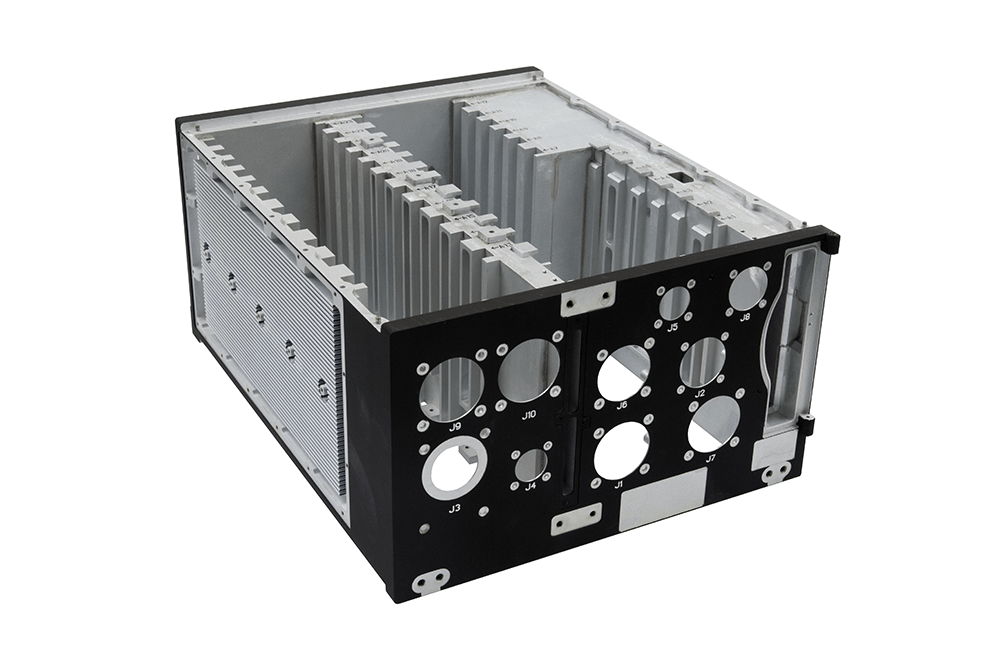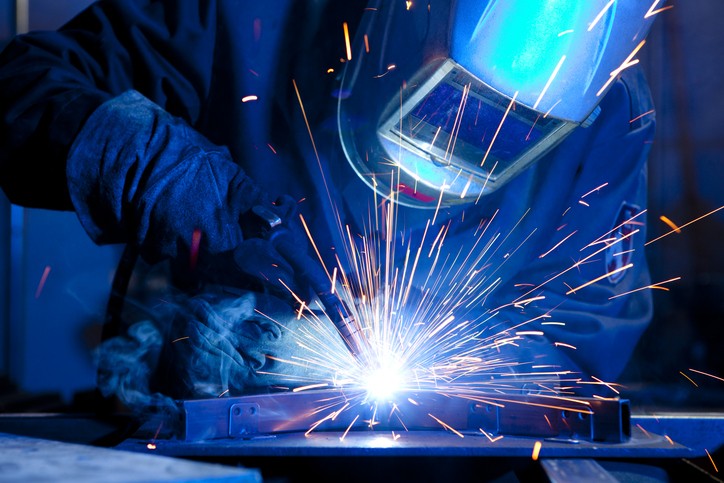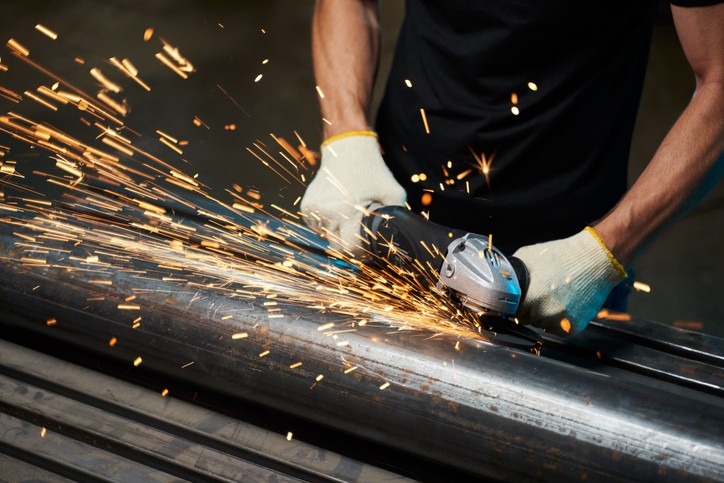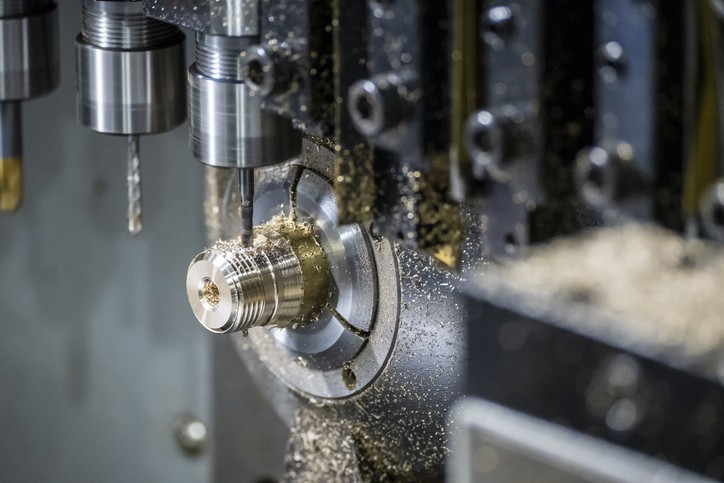
Table of Contents
- Fundamental Metallurgical Distinctions: Welding vs. Aluminum Dip Brazing
- Technical Methodology: The Aluminum Dip Brazing Process
- Engineering Advantages Driving Material Selection Decisions
- Critical Applications Optimized Through Aluminum Dip Brazing
- Material Selection Considerations for Optimal Results
- Economic Benefits Beyond Technical Performance
- The Critical Role of Specialized Expertise
- Making Informed Joining Technology Selections
In precision manufacturing for defense and aerospace applications, the methodology employed for joining metal components directly impacts mission-critical outcomes. Aluminum dip brazing has emerged as the preferred joining technology among top defense engineers when performance standards cannot be compromised. Yet despite its significant advantages, this specialized metallurgical process remains underutilized across broader manufacturing sectors.
At New Age Metal Fabricating (NAMF), we’ve refined aluminum dip brazing techniques through four decades of specialized service to defense and aerospace clients. The metallurgical bonds created through our proprietary dip brazing protocols frequently exceed the base material’s inherent strength characteristics—an outcome that represents fundamental engineering advantages over conventional welding methodologies.
Fundamental Metallurgical Distinctions: Welding vs. Aluminum Dip Brazing
Welding and brazing represent fundamentally different approaches to metal joining that produce distinctly different metallurgical outcomes. Conventional welding processes melt the base materials, creating a fusion zone where components intermix with filler material. This localized melting introduces significant thermal stress that frequently results in:
- Material warping and dimensional distortion
- Residual internal stress patterns
- Compromised mechanical properties within heat-affected zones
- Potential microstructural alterations
Aluminum dip brazing operates on entirely different metallurgical principles. The process joins components using a filler metal that liquefies at temperatures below the base metal’s melting point. This critical distinction means base components maintain their solid state throughout the process, preserving their fundamental metallurgical properties and dimensional stability.
This distinction becomes particularly significant when manufacturing complex aluminum assemblies with multiple joint interfaces or precise dimensional requirements. The uniform thermal profile during dip brazing eliminates the localized temperature extremes that cause distortion in welded structures.
Technical Methodology: The Aluminum Dip Brazing Process
Successful aluminum dip brazing depends on four precisely controlled process stages that transform discrete components into a unified, high-integrity assembly.
1. Precision Surface Preparation
The initial surface preparation represents a non-negotiable quality determinant. Any surface contaminants—including oxidation, machining oils, or manufacturing residues—can prevent proper wetting and capillary flow of the filler material. Our facility employs specialized chemical cleaning protocols developed specifically for aerospace-grade aluminum alloys, ensuring optimal surface conditions for metallurgical bonding.
For components that have undergone rapid machining processes, additional surface preparation protocols may be implemented to address the unique surface characteristics that result from high-speed cutting operations.
2. Precise Component Assembly and Fixturing
Components undergo precise assembly with brazing filler metal strategically positioned at each joint interface. This assembly configuration is typically maintained using specialized fixturing that preserves exact component relationships throughout thermal processing.
3. Controlled Thermal Preparation
The assembly undergoes a methodical preheating sequence in a controlled furnace environment. This critical phase:
- Eliminates residual moisture
- Activates the flux chemistry
- Reduces thermal shock potential during salt bath immersion
- Prepares the metal surfaces for optimal filler flow
4. Immersion in Precisely Formulated Salt Bath
The final phase involves immersion in a molten salt bath maintained within precise temperature parameters—typically between 1000 °F (537.78 °C) and 1100 °F (593.33 °C). This specialized medium transfers heat uniformly throughout the entire assembly, allowing the filler metal to melt and flow into joint interfaces through capillary action. The immersion process is typically completed within a two-minute window, minimizing exposure time at elevated temperatures.
The result is a metallurgically sound bond, requiring minimal post-processing. The complete assembly emerges as a unified component with exceptional structural integrity and dimensional stability.
Engineering Advantages Driving Material Selection Decisions
Defense and aerospace engineers select aluminum dip brazing based on quantifiable performance advantages that directly impact product reliability and manufacturing efficiency.
Uniform Thermal Distribution
Perhaps the most significant technical advantage stems from the uniform heat distribution inherent to the dip brazing process. Unlike welding’s highly localized thermal input, dip brazing surrounds the entire assembly with a consistent temperature. This thermal uniformity eliminates the warping and distortion that frequently compromise welded aluminum structures.
Simultaneous Joint Formation
While welding necessitates sequential joint formation, dip brazing forms all joints simultaneously, regardless of quantity or accessibility. Assemblies incorporating dozens or even hundreds of connections benefit tremendously from this parallel processing capability. For assemblies that also incorporate brass milling components, the ability to create uniform joints without the distortion common to welded brass is particularly valuable in precision applications.
Complex Geometric Capability
Geometrically complex features such as internal passages, honeycomb structures, and intricate cooling channels present significant challenges for conventional joining methods. Aluminum dip brazing excels with these complex geometries because the filler metal naturally flows into properly designed joint clearances, regardless of their accessibility or complexity.
Enhanced Stress Distribution
The metallurgical characteristics of brazed joints distribute mechanical stress more effectively than welded connections. Unlike the concentrated stress points characteristic of welded joints, brazed connections distribute loads across broader interface surfaces. This load distribution significantly improves fatigue resistance—a critical performance factor for components subject to vibration or thermal cycling.
Joining Disparate Material Thicknesses
Welding thin sections to substantial components frequently results in distortion or burn through of the thinner material. Dip brazing maintains uniform heating regardless of material cross-section, enabling successful joining of components that might vary by an order of magnitude in thickness.
Preservation of Base Material Properties
Perhaps most critically, aluminum dip brazing preserves the base material’s mechanical and physical properties. The heat-affected zone characteristic of welding can significantly compromise aluminum’s carefully engineered material properties. Since dip brazing never melts the base material, those properties remain intact throughout the assembly.
Critical Applications Optimized Through Aluminum Dip Brazing
The technical advantages of aluminum dip brazing translate directly into superior performance in specific applications demanding the highest reliability and precision standards.
Electronic Enclosures for Defense Systems
Electronic enclosures for military and defense systems represent one of the most common applications for aluminum dip brazing. These ruggedized enclosures must provide:
- Protection for sensitive electronics in extreme environments
- Electromagnetic interference (EMI) shielding
- Thermal management capability
- Dimensional stability under variable conditions
The continuous, uniform joints created through dip brazing provide superior environmental sealing and EMI shielding compared to mechanical fastening or spot welding approaches.
Thermal Management Components
Heat exchangers, cold plates, and liquid cooling systems depend on hermetically sealed internal passages that efficiently transfer thermal energy. Aluminum dip brazing creates the leak-free joints and thermal conductivity these applications require, while maintaining the dimensional precision necessary for efficient heat transfer.
For applications requiring integration with aluminum laser cutting components, the brazing process ensures perfect sealing of complex fluid pathways without the distortion common to welded assemblies.
Structural Components for Aerospace Applications
Aerospace structural components leverage dip brazing’s ability to create strong, lightweight assemblies. From satellite structures to aircraft components, the weight optimization and structural integrity provide compelling advantages over mechanical fastening or welding approaches.
Radar and Communication Equipment Housings
Radar and communication equipment housings demand both precise component alignment and robust environmental sealing. Aluminum dip brazing maintains critical dimensions while creating the continuous metallurgical joints needed for long-term reliability in challenging operational environments.
Material Selection Considerations for Optimal Results
While aluminum dip brazing offers substantial technical advantages, material selection remains critical to process success. Aluminum alloys from the 6000 series (particularly 6061) and certain 5000 series alloys respond exceptionally well to the dip brazing process.
Some alloy families present specific challenges. The high-strength 7000 series (including 7075) can experience reduced mechanical properties after brazing unless specific post-processing heat treatments are implemented. The 2000 series (including 2024) typically requires specialized consideration due to its copper content.
Proper alloy selection represents just one aspect of successful design for dip brazing. Joint design parameters, clearance specifications, and filler metal selection all contribute significantly to the final assembly’s performance characteristics. Engineers familiar with dip brazing’s unique metallurgical attributes can design components that fully leverage its advantages while mitigating potential limitations.
Economic Benefits Beyond Technical Performance
The engineering advantages of aluminum dip brazing translate directly into quantifiable economic benefits that become increasingly significant as production volumes increase.
- Reduced Labor Requirements: Labor costs decrease substantially for complex assemblies. Rather than individually welding dozens of joints—each requiring setup, execution, and inspection—dip brazing forms all connections simultaneously. This parallel processing capability dramatically reduces labor hours for assemblies with multiple connection points.
- Improved Yield Rates: Scrap rates typically decrease compared to welding operations. The controlled, uniform heating inherent to dip brazing minimizes distortion that might otherwise render precision components unusable. For high-value aluminum components, this yield improvement can significantly impact overall production economics.
- Minimized Secondary Operations: Post-processing requirements diminish considerably. Welded assemblies frequently require extensive straightening, stress relieving, or secondary machining to achieve final dimensional specifications. Dip-brazed components generally maintain their designed dimensions, reducing or eliminating these secondary operations.
While the initial engineering investment and fixturing for dip brazing may require more up-front development than simple welding operations, this investment yields significant returns through consistent quality and reduced rework as production continues.
The Critical Role of Specialized Expertise
Despite its substantial advantages, successful aluminum dip brazing implementation requires specialized knowledge and experience. Even minor process variations can significantly impact joint quality and mechanical performance. Temperature control protocols, flux composition, cleaning procedures, fixturing methodologies, and post-brazing handling all influence the final result.
At New Age Metal Fabricating, we’ve refined our aluminum dip brazing processes through decades of specialization, serving defense and aerospace clients with the most demanding requirements. Our comprehensive manufacturing facility houses capabilities extending beyond brazing to include precision machining and sheet metal fabrication—allowing complete control over every aspect of component production.
This integrated manufacturing approach ensures consistency throughout the production process—from raw material to finished assembly. For defense and aerospace applications where failure cannot be tolerated, this level of process control provides essential quality assurance.
Making Informed Joining Technology Selections
The selection of optimal joining technologies ultimately depends on specific application requirements, material specifications, and performance criteria. For complex aluminum assemblies demanding precision, strength, and reliability, aluminum dip brazing offers compelling technical advantages that explain its continued preference among leading defense and aerospace engineers.
The strategic advantages of aluminum dip brazing extend beyond simple joint formation, offering defense and aerospace manufacturers a comprehensive solution for creating complex, high-performance assemblies. When evaluating joining technologies for critical applications, consider these key factors:
- Joint integrity and metallurgical characteristics
- Dimensional stability requirements
- Production volume economics
- Assembly complexity
Key Takeaways:
- Aluminum dip brazing preserves material properties by never melting the base metal, maintaining critical mechanical characteristics.
- The process creates simultaneous joints regardless of complexity, reducing labor and improving consistency.
- Properly brazed assemblies distribute stress more effectively, enhancing fatigue resistance in dynamic applications.
Ready to Explore Aluminum Dip Brazing for Your Critical Components?
When your application demands the structural integrity, dimensional stability, and reliability that only proper aluminum dip brazing can provide, consider consulting the specialists at New Age Metal Fabricating. Our four decades of experience serving the defense and aerospace industries ensure your components meet the most demanding performance requirements.




